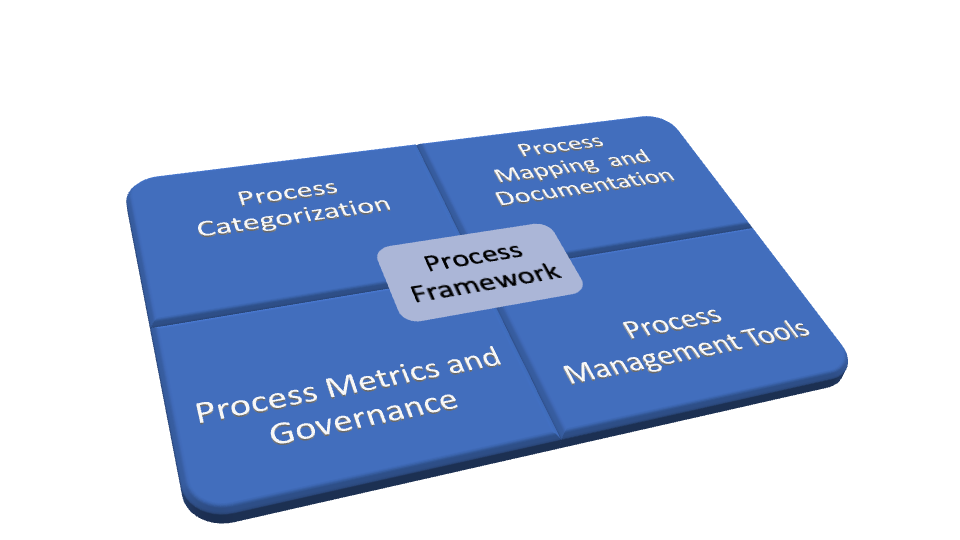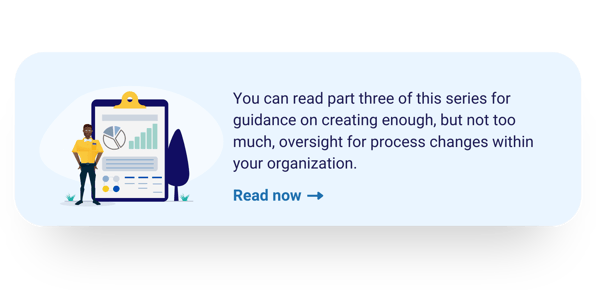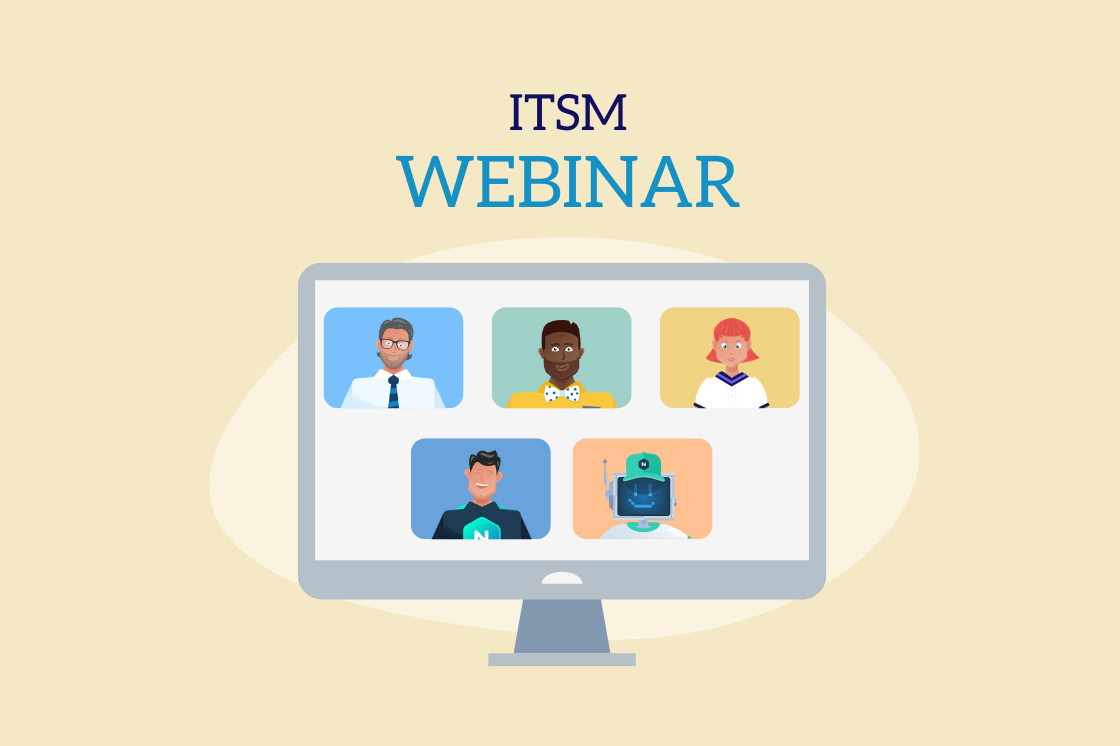The Process Framework – A Guide for All Processes
A Business Process Framework is a structured approach to defining, analyzing, and improving business processes. It's the perfect guide for your process management initiatives.
In the first installment of this series on Business Process Governance, we explored the importance of aligning with the strategic goals and objectives of the enterprise. This article will guide you through establishing a Business Process Framework.
What is a Business Process Framework?
Business Process Frameworks provide the needed structure for your process management program.
Process frameworks give everyone in your organization the tools and standards to participate in process initiatives while maintaining consistency.
It provides guidance and standards for such things as:
- Process Categorization
- Process Mapping
- Process Documentation
- Process Metrics
- Process Governance
- Process Management Tools

You can create your own framework or leverage industry standards such as APQC's Process Classification Framework®, the eTOM Business Process Framework®, Business Process Modeling Notation (BPMN)®, or IT process frameworks such as ITIL® or COBIT®.
By implementing a well-defined framework, you can ensure that processes are consistently defined, documented, measured, governed and improved.
A process framework serves as a powerful tool to align your processes with the strategic goals and objectives of your organization, resulting in enhanced performance and increased customer satisfaction.
Process Categorization
Process categorization is an essential component of the framework, enabling you to classify and organize your processes based on their strategic importance and impact. This categorization allows you to allocate resources efficiently and focus on areas with the most significant potential for improvement.
A popular way to categorize processes is through the use of Process Levels. For example:
- Process Level 1 - This process level identifies the organizational function to which the process belongs.
- Process Level 2 - This process level organizes the processes of a particular corporate function into groups of related processes.
- Process Level 3 - This process level defines the individual processes within a group.
- Process Level 4 - This level is the high-level activities of a process (commonly depicted on a SIPOC diagram).
- Process Level 5 - These are the step-by-step tasks within an activity of a particular process.
- Process Level 6 - These are the procedures for performing a task within a process.
Process levels provide a standardized approach for defining all company processes. For more information, please refer to the following article: What are Process Levels, and why are they important?
Process Mapping
Process mapping is another vital aspect of the framework, as it visually represents the flow of activities, decision points, and handoffs within a process. Process Mapping helps identify bottlenecks, redundancies, and inefficiencies, allowing you to make informed decisions about process optimization.
Regarding process mapping, plenty of techniques are available to help organizations visually represent their cross-functional processes.
One popular technique is BPMN (Business Process Modeling Notation), which provides a standardized way to create process models that both technical and non-technical stakeholders can easily understand.
BPMN uses a set of symbols and notations to represent different process elements, such as tasks, gateways, and events. These symbols are then connected with arrows to show the flow of activities and decisions within the process. By utilizing BPMN, organizations can create clear and concise process maps that are easy to understand and share.
Another mapping technique is LOVEM (Line of Visibility Enterprise Modeling). LOVEM focuses on mapping processes from the customer's perspective.
It considers the roles and responsibilities of individuals and groups within the organization and visualizes how they interact with each other and the process itself. LOVEM provides a comprehensive view of the process, highlighting the handoffs, dependencies, and interactions between different stakeholders with emphasis on the customer.
Swimlane diagrams are another popular technique for process mapping.
Swimlanes divide the process map into horizontal or vertical lanes, each representing a different organizational role, department, or function. This technique allows for a clear visualization of the responsibilities and interactions of various stakeholders in the process. Swimlane diagrams are handy when mapping cross-functional processes that involve multiple departments or teams.
Lastly, standard flowcharting is a classic technique used to map processes. Flowcharts use various shapes and symbols to represent different elements of a process, such as tasks, decisions, and connectors. Flowcharts are easily understood and widely recognized, making them a versatile tool for process mapping.
Ultimately, the choice of technique depends on the specific needs and preferences of the organization. Each method has its advantages and can be used to map processes effectively.
Whether it's BPMN, LOVEM, swimlane diagrams, or standard flowcharting, the goal is to create clear, concise process maps that facilitate understanding, communication, and improvement.
For more information, check out:
- An Introduction to Process Mapping.
- Process Diagrams: Why they are important and examples to get you started.
Process Documentation
The process documentation guidelines provided by the framework ensure that all processes are well-documented, making it easier for employees to understand and follow them. Clear and concise process documentation also improves transparency and facilitates knowledge transfer within the organization.
Process Documentation goes well beyond a process map or flowchart.
A comprehensive process document should include:
- Process Description: Give an overview of the process.
- Goals and Objectives: Define the purpose and measurable targets.
- Roles and Responsibilities: Clarify employee roles for collaboration.
- Supporting Systems: List systems involved in process execution.
- Process Maps: Visualize the process flow for better understanding.
- Activity and Task Details: Provide task descriptions, inputs, outputs, and instructions.
- Process Governance: Establish policies, controls, and metrics.
- Links to External Documentation: Connect to provide additional context and resources.
- Glossary of Process Terms: Include definitions for standard terms.
Check out these resources for additional information on documenting processes:
- [Webinar] Best Practices in Process Design and Documentation
- Process Documentation, a Complete Guide.
Process Metrics
Measuring process performance is crucial for identifying areas of improvement and monitoring the impact of process changes. It allows organizations to assess the effectiveness of their process management initiatives and make data-driven decisions to drive continuous improvement.
Standardized metrics within the Business Process Framework enable organizations to track key performance indicators (KPIs).
These metrics measure process health and identify potential areas of improvement. By monitoring KPIs, organizations can identify bottlenecks, analyze process efficiency, and evaluate the impact of any process changes implemented.
Some common key performance indicators (KPIs) for processes include lead time, cycle time, throughput, error rates, customer satisfaction, and resource utilization. Additionally, each process will have specific KPIs and metrics tailored to it.
These metrics provide valuable insights into process performance, allowing organizations to identify areas of improvement and prioritize their efforts for maximum impact.
Many enterprises will create a single executive view dashboard with some key measures across all processes to provide further insight into the effectiveness of the processes for the business.
The process framework should also identify any reporting requirements, which would apply to all process initiatives to drive consistency across the enterprise.
By regularly measuring process performance, organizations can identify trends, patterns, and areas of inefficiency. This data-driven approach helps organizations focus on the most critical areas for improvement, resulting in enhanced efficiency, reduced costs, and improved customer satisfaction.
Process Governance
Process governance involves overseeing the execution of processes to ensure they continue to deliver value, meet internal or regulatory controls, and are continually improved to ensure optimal performance.
Your process framework should establish the guidelines for how all processes will be managed.
Process owners and managers play critical roles in this governance process.
Process owners are responsible for the overall management and success of specific organizational processes. They provide leadership, direction, and guidance to align processes with strategic goals and objectives.
Process owners monitor the execution of processes, identify bottlenecks or inefficiencies, and implement necessary improvements. They also coordinate with stakeholders, gather feedback, and communicate any changes or updates to the process.
On the other hand, process managers are responsible for the day-to-day management of processes. They work closely with process owners to ensure smooth execution and adherence to established standards and guidelines. Process managers monitor process performance, track key performance indicators (KPIs), and identify areas for improvement. They collaborate with cross-functional teams to implement changes, provide training and support to employees, and ensure the efficiency and effectiveness of processes.
Continuous process improvement is a fundamental element of effective process governance. It involves constantly evaluating and analyzing processes to identify areas for enhancement and implementing changes to drive efficiency and effectiveness.
Organizations need to establish a structured approach that encourages collaboration, innovation, and learning to achieve continuous process improvement. Using methodologies such as Lean Six Sigma or Kaizen, which focus on eliminating waste and reducing variation, will drive incremental improvements.
Ultimately, continuous process improvement is a journey, not a destination. It requires a mindset of constant learning, adaptation, and innovation. By embracing this mindset, organizations can achieve sustainable improvements in their processes, leading to enhanced efficiency, reduced costs, and increased customer satisfaction.
Process for process sake is not the goal of a BPM program. Processes must be capable of being consumed, used, and evolved to realize the benefits the supporting organization desires.
Therefore, the framework should govern the publication of processes and employee training, ensuring that all aspects are clearly understood by those who follow or benefit from them.
The process deliverables may be published as a website, a document, a swimlane flow, RACI charts or in many other formats. The framework should clarify what process deliverables will be provided, so all impacted parties have the information they need.
Process Management Tools
To successfully implement a Business Process Framework, it is crucial to utilize various available process management tools. These tools fall into different areas, including:
- Process Mapping: These tools help create visual representations of processes to foster analysis, training, and communication. Attend a demo of the Navvia Process Designer.
- Process Automation: These tools use technology and software to automate and streamline processes, improving efficiency and reducing human error. Check out this article on How Business Process Automation Increases Efficiency and Reduces Cost.
- Process Mining: These tools analyze data from various sources to gain insights into existing processes, identifying areas for improvement and optimization.
By leveraging these process management tools, organizations can effectively implement and manage their business process framework, improving efficiency, streamlining operations, and improving overall performance.
In conclusion, establishing a Business Process Framework is the best way to manage and improve your organization's processes by fostering a culture of continuous improvement and empowering employees to contribute to process initiatives. 


